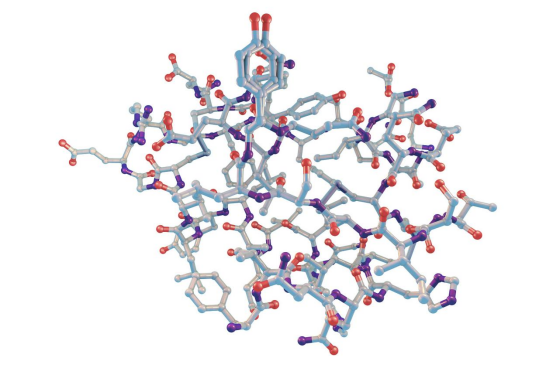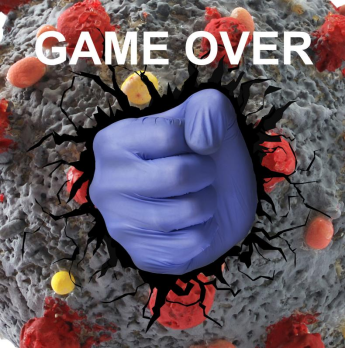科学文献
Lewis C. Cantley, Director of the Meyer Center at the Sandra and Edward Meyer Cancer Center and Professor of Cancer Biomedical Sciences at Weill Cornell Medical College, won the Breakthrough Prize in Life Sciences in 2013. He discovered the signaling pathway of phosphoinositide 3-kinase (PI3K) and elucidated its role in tumor growth, which is very important for understanding cancer and diabetes.
Professor Lewis C. Cantley is widely praised for discovering phosphatidylinositol 3-kinase (PI3K) and revealing its core biochemical mechanisms in cancer metabolism and diabetes. Despite this, the professor always insists that he is a pure chemist and is cautious about the biochemical models proposed in textbooks or academic journals, and does not easily assume that they are perfect. His philosophy is that only by deeply understanding the substance at the molecular level can we gain insight into its essence. At the same time, the professor emphasizes that scientists should have the courage to believe in their own data and provide explanations supported by sufficient evidence on this basis in order to build new models that break with tradition .

Phosphatidylinositol 3-kinase AKT signaling pathway
Phosphatidylinositol 3-kinase (PI3K) is an enzyme that plays an important role in cell signaling. It belongs to the phosphatidylinositol kinase family, which also includes phosphatidylinositol 4-kinase (PI4K) and phosphatidylinositol 5-kinase (PI5K). PI3K is mainly responsible for catalyzing phosphatidylinositol (PI) to generate phosphatidylinositol-3-phosphate (PI3P), a phospholipid molecule that plays a key role in cell signaling.
PI3K has diverse locations and functions in cells. It can play a role in organelles such as the cell membrane, endoplasmic reticulum, and Golgi apparatus. The activity of PI3K is regulated by a variety of factors, including hormones, growth factors, cytokines, etc. When these signal molecules bind to receptors on the cell membrane, PI3K can be activated, thereby triggering a series of signal transduction cascade reactions.
The main function of PI3K is to participate in physiological processes such as cell growth, proliferation, survival and metabolism. It can activate downstream signaling molecules such as protein kinase B (PKB/Akt) and phosphatidylinositol-dependent kinase 1 (PDK1) by generating PI3P. These signaling molecules further regulate various physiological activities of cells, such as protein synthesis, cell cycle progression, cell survival and apoptosis.
In addition to its normal physiological functions, PI3K is also closely related to the occurrence and development of a variety of diseases. For example, in cancer, abnormal activation of the PI3K signaling pathway often leads to excessive cell proliferation and survival, thereby promoting tumor growth and metastasis. Therefore, PI3K has become one of the important targets for cancer treatment.
Research on PI3K not only helps to gain a deeper understanding of the mechanism of cell signal transduction, but also provides important ideas for the development of new drugs and treatment strategies. By inhibiting the activity of PI3K or regulating its expression level, the growth and survival process of cells can be intervened, thereby achieving the purpose of treating diseases such as cancer. In the future, as the research on PI3K continues to deepen, I believe there will be more new discoveries about its role in cell signal transduction and disease treatment.
Unveiling PI3K
A major question in the field of life sciences is how cells decide to grow and divide. In order to promote these processes, cells need to take up more glucose from the blood and pass it through the cell membrane to enter the cell. But how increase glucose uptake has always been a mystery.
In the late 1970s, the insulin receptor had just been purified, and the academic community was conducting research on how insulin works in full swing. Researchers found that insulin can act on transmembrane tyrosine kinases, and in addition to glucose, the membrane transport of many substances is regulated by insulin. These research results inspired Cantley. In 1978, Cantley joined the Department of Biochemistry and Molecular Biology at Harvard University as an assistant professor. In the early 1980s, Professor Cantley discovered a different kinase, which he believed might explain problems such as glucose uptake, amino acid uptake, and glycogen sensing. In 1985, he and his colleagues made groundbreaking discoveries about PI3K. Subsequently, between 1985 and 1992, Professor Cantley and his colleagues completed important foundation work at Tufts University School of Medicine, where they detected the biochemical mechanisms by which cells respond to oncogenes and growth factors.

Professor Cantley and his colleagues found that PI3K triggers cells to take up glucose in conjunction with other growth factors. In addition, Professor Cantley revealed the molecular signaling cascade that interacts with PI3K to regulate this process.
The most surprising thing is that they found that in addition to the mutations in cancer cells that often activate PI3K to achieve unlimited growth and division, the elevated insulin levels in the blood of insulin-resistant diabetic patients also activate PI3K. More clues were subsequently discovered - cancer cells often carry more insulin receptors than normal cells of the corresponding tissues, and adding high doses of insulin to the culture medium will make cancer cells grow more vigorously, etc. So, a bold idea emerged in Professor Cantley's mind - insulin can trigger cell growth in exactly the same way as oncogenes, and they both activate PI3 kinase, which shows that there is a correlation between the two. Professor Cantley said: "When we made this discovery, people's understanding of phosphoinositide was still limited. We only knew that it was an intermediate in the production process of inositol-1,4,5-triphosphate." Professor Cantley's team discovered that PI3K catalyzed an unexpected reaction: phosphorylation of phosphatidylinositol at the D-3 position of the inositol ring. This discovery therefore led to the discovery of a new signal transduction pathway. PI3K activation is essential for oncogene-mediated cell transformation and insulin-dependent stimulation of sugar uptake and metabolism.

Eliminate doubts and prove your strength.
Professor Cantley's further research showed that a phosphokinase can co-purify with multiple cancer proteins, and even more surprisingly, this process also produced a group of previously unknown phosphoinositides. Initially, the academic community was quite skeptical of Professor Cantley's discovery of PI3K. Since 1992, Professor Cantley has worked at Harvard Medical School, and his further research finally broke the initial doubts of the academic community. Professor Cantley's team supported their results by further characterizing the mechanism by which growth factors and oncogenes activate PI3K, and further clarifying the pathways downstream of PI3K. The researchers found that these lipids directly interact with proteins and control a large number of cellular processes, which also made the importance of Professor Cantley's research results even beyond expectations. The discovery of PI3K opened a new research window, allowing the scientific community to begin to understand how biochemical signaling pathways regulate the growth of normal cells and how they trigger cancer when defects exist. Crucially, Professor Cantley's work enables researchers to use the genetic blueprint of signaling proteins to predict targets in order to find new cancer therapies.

"My goal has always been to unravel the mysteries of complex cellular reactions by providing physicochemical explanations. By elucidating these pathways, we reveal entirely new targets for developing drugs to treat diseases such as cancer and diabetes," said Professor Cantley.
Professor Cantley is committed to applying laboratory research results to reality, hoping to provide effective solutions for the treatment of diseases such as diabetes and cancer. He believes that only by turning theory into practice, such as developing new drugs, formulating new diet plans or exploring new treatment strategies, can the value of research be truly realized. Currently, Professor Cantley is the co-founder of two biopharmaceutical companies and an innovative company that combines nutritional products and pharmaceuticals. His company is testing various combinations of therapies based on his research results in order to improve the efficacy of drugs. It is expected that Professor Cantley and his team will achieve more results in the future, realize their ten-year goal as soon as possible, and bring benefits to the majority of patients.